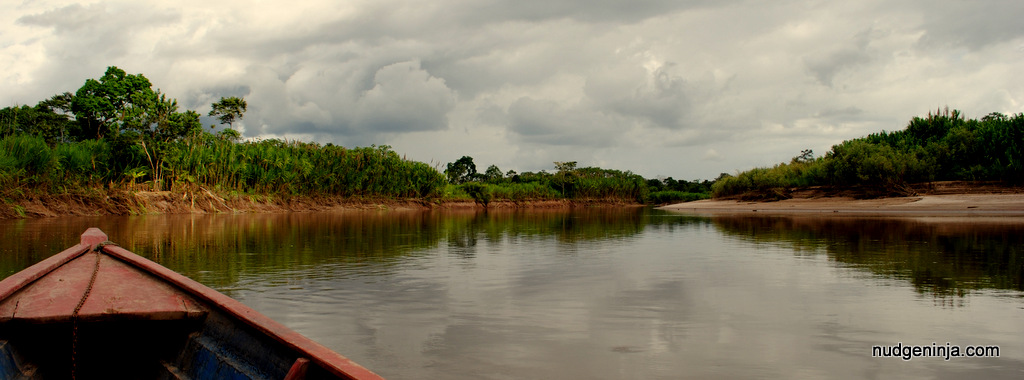Tourism and Community Development in Tingana
A trip to Tingana is one of those trips that start before sunrise. I wake up around 4:30am with the pitter patter of rain on the roof. I start to worry that the trip might not push through, and then remind myself that in the rainforest, rain is to be expected even if it’s not the rainy season. It seems it usually rains for ten minutes sometime between 3:30 to 4:30 at dawn.
The commuter van arrives to pick us up right on schedule. It starts to drizzle again as we leave Moyobamba, the center of the San Martin region. About an hour later, we reach the edge of a river. This is it. We are going to visit a small riverside community found in the Peruvian Upper Amazon.
Rio Mayo, is a river that eventually drains to the Amazon. In that particular area, it is ten meters wide and about two meters deep during the dry season. The water level rises up to two meters more in January and February, the peak of the rainy season. The riverbanks are planted with cane, plantain, cacao, and coffee.
The boat turns right, and a tributary hidden under a canopy of mangroves suddenly becomes visible. The tall ones have roots that take 15 years to reach the river. The ones that have branches closer to the ground with roots that are reddish or pinkish at the tips, take five years to grow long enough to touch the water.
The boat ride is in itself, worth the trouble. It’s like entering a secret kingdom with the mouth of a creek as the door. And then there’s a bonus: wildlife. Of course, the wild animals won’t parade in front of you. They will show themselves from afar and then continue on with their business. That means you’ll have to keep quiet at much as possible so as not to drive them away, and be alert as they seem to keep on playing hide and seek.
About a dozen families make the visit to Tingana possible. They row the boats, prepare the food, take care of the tree nursery, and welcome the occasional wild animals that venture into the built up area. Had the area not become a community-based biodiversity conservation and eco-tourism site, the forest may have been destroyed for commercial agriculture. Because of eco-tourism, the forest is intact and the community has an additional source of livelihood.
The cost of the river boat ride, which includes the breakfast and lunch, is equivalent to a taxi ride from the airport Lima to Barranco and back. Knowing that (towards the end of my trip) made me want to go back to Tingana. If only I could stay longer in Peru. But as all journeys have to come to an end, I am consoled by the fact that the community members by the river are taking care of that stretch of river and rainforest — and the sloths, monkeys and woodpeckers that live in it.


Pingback: Miraflores | Travel | Nudge Ninja
Pingback: San Martin | Travel | Nudge Ninja